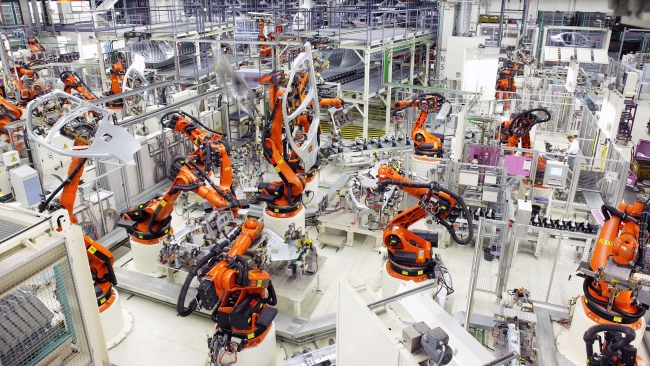3 minute read - 1st December 2023
Production growth up for both car and commercial vehicle manufacturing
British car and commercial vehicle manufacturing both saw production growth in October, according to new figures from the Society of Motor Manufacturers and Traders (SMMT). Car production output surged 31.6% in October and commercial vehicle (CV) production returned to growth in October following a decline in September, rising 47.1% year-on-year.
Car makers saw the eighth month of growth this year with 91,512 units leaving factory gates, marking the best October performance since 2019. The news follows recent announcements of significant investment into advanced automotive manufacturing, with some £4bn committed by government and industry combined in November alone, a massive vote of confidence in the sector.
Car production for both the home and overseas markets grew in October, up 23.9% and 33.4% respectively, although it was exports which drove output. More than eight in 10 (82.3%) cars were shipped abroad, representing 75,343 units, while 16,178 cars stayed in the UK. Export growth was driven by rising shipments to the EU, up 58.5%, which remains our largest market by far accounting for almost two-thirds of exports (65.2%), and Turkey, which grew almost four-fold to make it the third largest market above the US, China and Japan.

British car production rose for the eighth consecutive month in October, whilst commercial vehicle output saw the best performance since 2008, according to the latest SMMT figures / Picture: Getty/iStock
Never miss the latest manufacturing news by signing up to our newsletter here
UK production of battery electric (BEV), plug-in hybrid (PHEV) and hybrid (HEV) vehicles also rose. Combined output grew 52.1% to represent four in 10 (40.1%) of all cars made in the month, a near record high. Since January, UK factories have turned out 287,408 of these models, up 59.1% on the year before and helping push overall car production up 16.7% to 751,422 units.
Mike Hawes, SMMT chief executive, said: “These figures, coming on the back of a series of significant investment announcements, signpost a bright 2024 for the UK automotive sector. Government and industry are committing billions to transform the industry for a decarbonised future. Last week’s publication of an Advanced Manufacturing Plan and Battery Strategy, the announcement of permanent full expensing in the Chancellor’s Autumn Statement and the £2bn commitment Government has made to advanced automotive manufacturing, underscore the increasing competitiveness of the UK. Automotive remains one of the country’s most critical industries, delivering jobs, productivity and economic growth across the country.”
October’s commercial vehicle production increase is the best performance in October since 2008 and up 41.4% on 2019’s pre-pandemic figures. Some 12,853 vans, buses, trucks, coaches and taxis rolled out of factory gates, up 4,113 units on last year and with the best percentage gain of the year, with the SMMT saying a sign of the significance of the recovery.

UK car manufacturing output was up 31.6% in October, with 91,521 units rolling out of British factories / Picture: KUKA
Output in the month was driven by production for export, up 47.0% to 8,680 units as more than two-thirds (67.5%) of output was shipped abroad. The EU cemented its place yet again as the UK’s largest international market, receiving 96.0% of exports – reinforcing the need for strong and stable trading links overseas. The domestic market also boasted a strong monthly performance, with orders increasing by 47.2% to 4,173 units.
October’s figures solidify CV manufacturing’s strong performance in the year-to-date, up 15.3% to 98,610 units – an increase of 58.6% on the same period in 2019 and representing the best 10 months since 2011. Exports continued their double-digit rise, increasing 21.4% to 62,229 units, whilst the home market recorded more modest growth of 6.1% to 36,381 units.
Mike Hawes, added: “A return to growth after September’s dip highlights the sector’s resilience and ability to build high-quality commercial vehicles – evident in the increasing demand for British-build vans at home and beyond. Continuing success, however, is not guaranteed. Tougher Rules of Origin for electric vans are set to come into effect from 1 January 2024, posing significant challenges so with just weeks remaining, a resolution is needed urgently, one that helps the sector on both sides of the Channel avoid additional cost and competitiveness challenges.”
